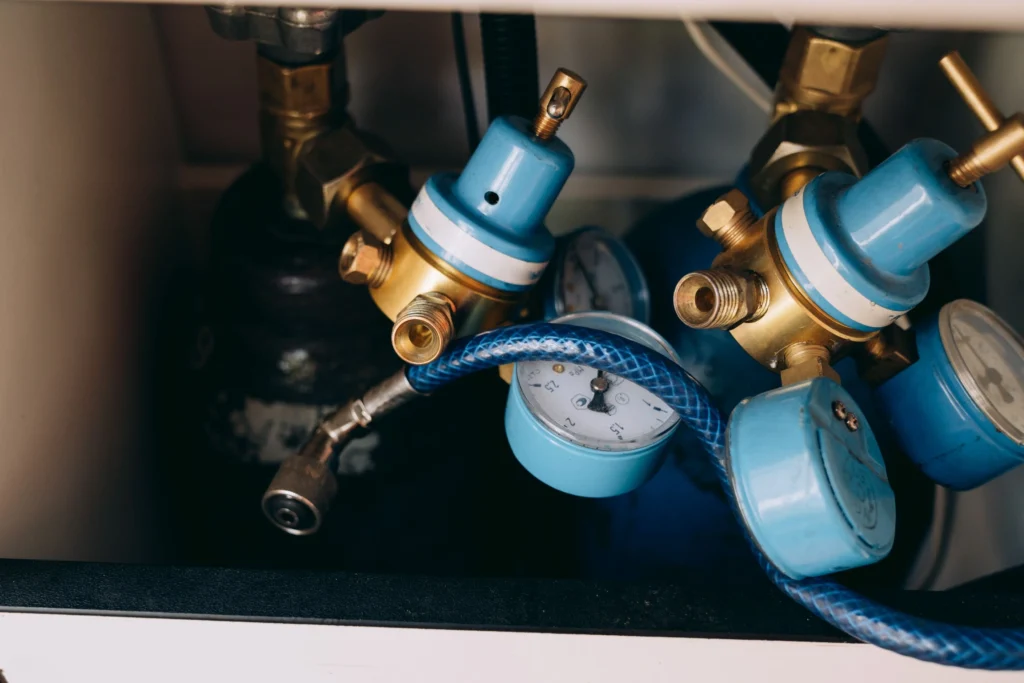INTRODUCTION PNEUMATIC & ELECTRO – PNEUMATIC SYSTEM DESIGN OPERATION AND MAINTENANCE
Pneumatic Air is used for many industrial applications including for actuators and valves, motors circuits etc. This course is designed to provide basic concepts and practical advice on how to Design Pneumatic & Electro – Pneumatic Circuits and use them for process automation of many units. The course covers fundamentals of pneumatics including the air compressor and properties of air, pneumatic and electro pneumatic components, and industrial applications of the same.
COURSE OBJECTIVES
Upon completion of this course, participant will be able to:-
- Learn pneumatic air fundamentals including generation and distribution
- Understand working principles of pneumatic and electro pneumatic components
WHO SHOULD ATTEND?
Mechanical, Electrical, Instrumentation and Process Engineers, Project Engineers, Maintenance Engineers and Supervisors interested to work in the field of Pneumatic, Automation and Process Control. The course will also definitely be beneficial for the all the other department people concerned with the plant operations, production, maintenance and safety. It could be also useful for the procurement and quality personnel.
BENEFITS
At the end of the training program, participants will be able to:
- Understand what Automation is and describe how the need arises
- Understand the advantages and disadvantages of Automation
- Identify when and where to apply Automation
- Understand the basic fundamentals and physical principles of Electro Pneumatic
- Exposed to the various application fields of Electrical &Pneumatic
- Understand Basic fundamentals of Electrical and components used for a electrical control system for pneumatics
- Understand how electro Pneumatic system works with practical hands on wiring up relays with switches to activate the pneumatic valves.
- Understand the basic fundamentals and physical principles of Pneumatic
- Exposed to the various application fields of & Pneumatic
- Understand the wide range of Pure Pneumatic components used in various industries, their characteristics, functions, symbols and application of Pneumatics in their respective industries.
- Understand how electrical Pneumatic system works including electrical ladder design and components in Stamping Machine etc.
- Understand how to manage housekeeping and minor maintenance tools can reduce machine failures
- Identify and detect machine using checklist
- Maintain mechanical equipment in satisfactory operation condition
- Reduce down time for carrying out simple repairs and adjustment
- Reduce frequency of breakdowns by carrying out effective repairs
- Understand what is electricity, calculate, current, resistance and potential difference • Recognize electrical components and circuit
TARGET AUDIENCE
Any maintenance technician, line technician, engineers, supervisors and anyone who is interested to understand Pneumatic can attend
DURATION: 2 days (9am to 5pm)
COURSE CONTENT
MODULE 1
- Instrument Air Compressors
- Distribution of instrument air
- Understand basic electrical ladder vs Pure pneumatics
- FRL – Filter, Regulator and Lubricator and valves
MODULE 2
- Component of a Pneumatic System
- Basics of Cylinders & Valves – Types, Working principles, operations • Understanding concepts of Port Numbering / Lettering
MODULE 3 – PNEUMATIC VALVES
- Pressure-Control Valves
- Directional-Control Valves
- Flow-Control Valves
MODULE 4 – PNEUMATIC ACTUATORS
- Cylinders
- Single Acting & Double Acting Cylinder
- Construction and Application of Cylinder
MODULE 5 – UNDERSTANDING PNEUMATIC CIRCUITS
- Design Simple Pneumatic Circuits
- Direct and indirect circuits
- Design Pneumatic circuits with “OR” gates and “AND” gates
- Design Pneumatic Circuits to control: Single acting and double acting Cylinders
MODULE 6
- Design & Implementation of Pneumatic Circuits using basic components • Concepts of Latches and their Applications
- Operation and Troubleshooting of Pneumatic Systems
MODULE 7
- Introduction to Electro-Pneumatics
- Solenoid Actuated Valves – Types, Working Principles
- Operations and Design
- Concept of Electrical Latch and its Applications Basic Electrical control system
- Basic Development of electrical control circuits Comparison of electro and Pure Pneumatic
- Circuit construction for various application basic level.
MODULE 8 – ELECTRO PNEUMATIC CONTROL SYSTEM
- Understand the components involved in a electrical control panel
- Understand the basic function of Relays
- Types of relays
- Relay sequence
MODULE 9 – LADDER DESIGNING AND PRACTICAL WIRING CONNECTION
- Basic ladder Design.
- Exercises with electrical control components PRACTICAL
MODULE 10 – TROUBLE SHOOTING AND ELECTRICAL SAFETY IN ELECTRO PNEUMATIC SYSTEM
- The do’s and don’t’s
- Carryout Trouble shooting STEP involved
- Logical approach method
MODULE 11 – PNEUMATIC APPLICATION EXAMPLES
- Basic System
- Filling Machine
- Continuous Pick and Place Machine
- Strainers and Filters
- Filtering material and elements
- Fittings, Connectors and Seals
MODULE 12 – TROUBLE SHOOTING IN PNEUMATIC
- FRL
- Cylinder
- Directional Valves
- Circuits


